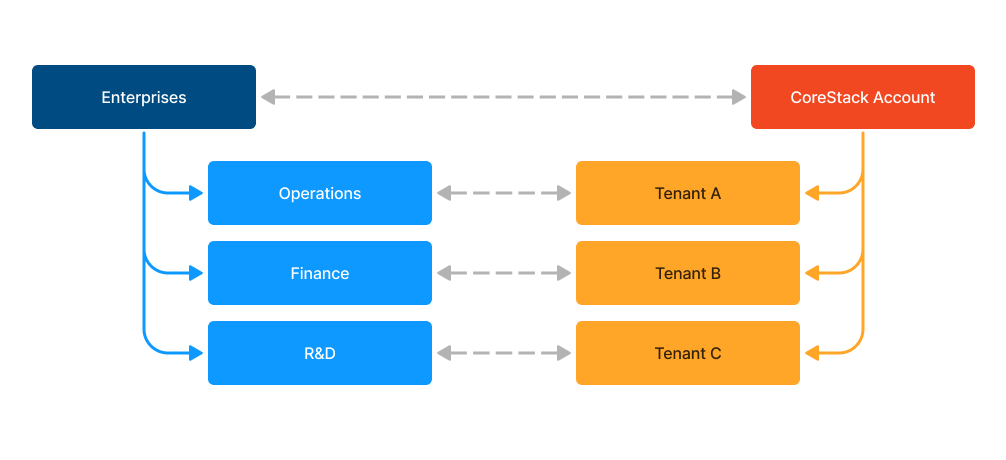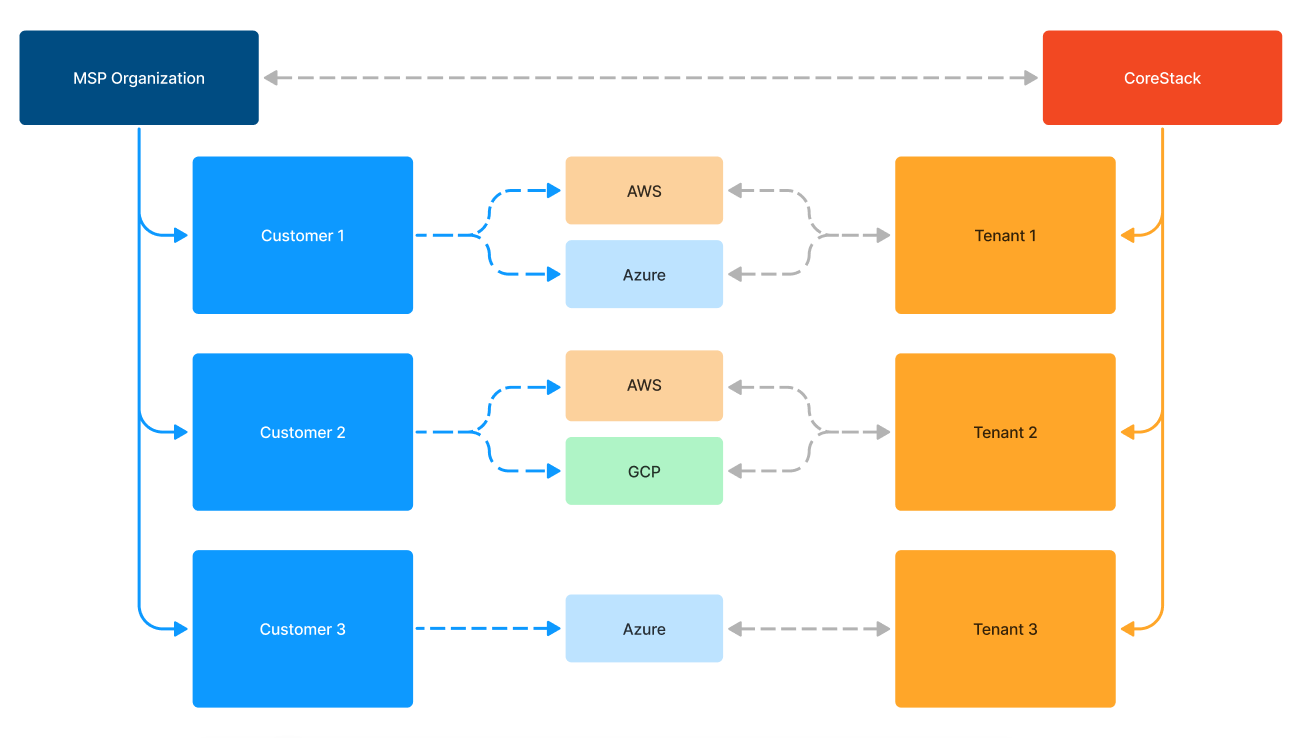Set up an organizational hierarchy
Understand what options you have for setting up your organization structure in CoreStack.
Overview
Once you have completed the initial steps for setting up your CoreStack account, you can organize your tenants and users into a hierarchy. This will help you facilitate efficient, role-based activities inside your CoreStack account and help drive better accountability across your team(s).
In this user guide, we'll briefly explain how organizational hierarchy works within CoreStack as well as what options you have for setting that up.
Tenant organization in CoreStack
CoreStack out of the box supports multi-tenancy.
In enterprises and IT organizations, there will be multiple departments. Associates and resources under each department are normally isolated from each other. This isolation is needed not only for financial accounting but also for security and management. Though the associates can have access to multiple departments, their permissions will vary.
Tenant structure for enterprises
In an enterprise, there can be multiple departments such as Operations, Finance, and R&D. These can be considered as tenants in CoreStack. The diagram below shows a sample mapping for a similar setup:

Model 1: Mapping Enterprise and CoreStack Structure
Tenant structure for IT organizations
In an IT organization, there can be multiple teams such as QA, Engineering, and DevOps. These can be considered as tenants in CoreStack. The diagram below shows a sample mapping for a similar setup:

Model 2: Mapping IT Organization and CoreStack Structure
Tenant structure for MSP organizations
MSP organizations typically manage multiple customers and their cloud resources across different platforms. These can be connected back to tenants in CoreStack. The diagram below shows a sample mapping for a similar setup:

Model 3: Mapping MSP and CoreStack Structure
It's up to you how you set up your organizational hierarchy within CoreStack, but hopefully these samples provide some good inspiration based on real use cases.
Please refer to the user guide pages for accounts, tenants, users, and roles for more detailed information.
Updated over 1 year ago